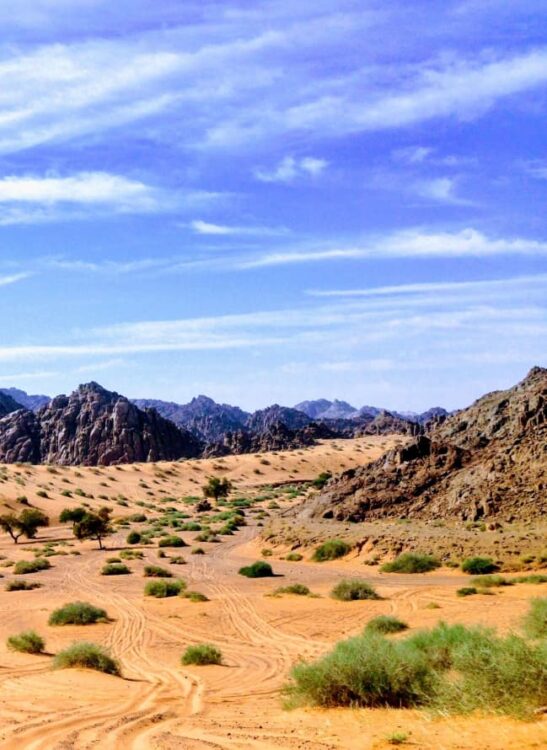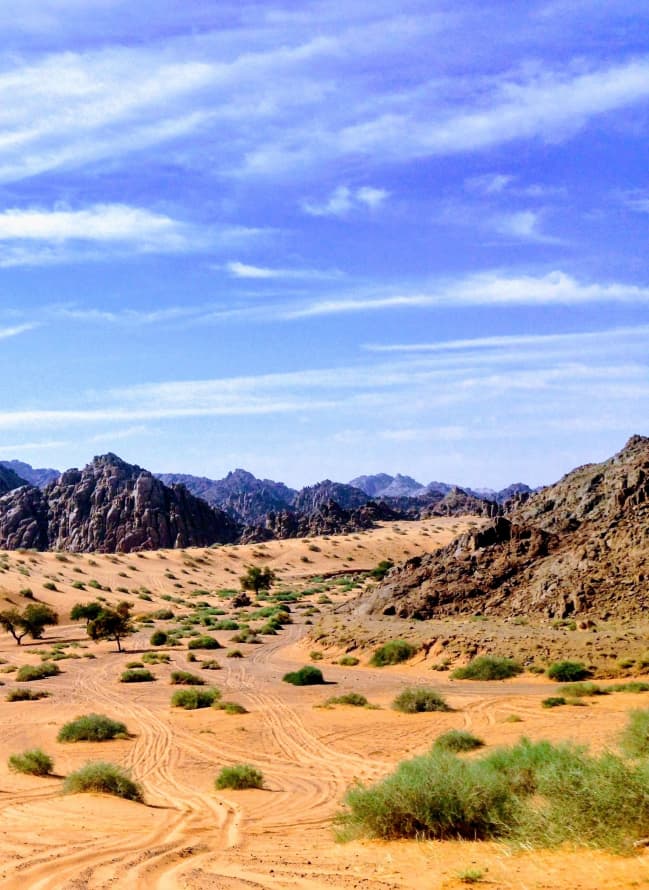
BALANCING ACT
success stories
Saudi Aramco
The Problem: Saudi Aramco needed a better understanding of the internationally significant biodiversity near one of their facilities in Abha, Saudi Arabia. Without this information, they couldn’t take action to make sure the delicate balance of the area stayed pristine and protected. The Solution: After auditing all existing data, we put together a team of specialist experts in each biodiversity area: flora, fauna, and bat species. Our team used cutting edge equipment – trail cameras, sherman traps, bat detectors – to complete comprehensive field studies across each area. We deployed state-of-the-art software to analyse bat calls we recorded on-site, to identify the different bat species making their home there. The Result: Integrating our own findings with STATERRA’s audit of previous studies, we produced a biodiversity report, showcasing the area’s wildlife with professional photography as well as data, and provided our findings along with recommended conservation measures. Saudi Aramco now has the knowledge and tools to action their conservation plan.
Case
Studies
The diversity of life on Earth is critical to the health of our planet and our personal well-being.
Nature, on the other hand, is under unprecedented stress.
Our demands for food, water, and land, as well as our increasing demand for energy, are destroying habitats, polluting our air and water, and driving animal and plant species to extinction.
Staterra’s goal is to play a significant role in improving the quality of our environment for the benefit of all people while promoting a better understanding of the effects of our society on the long-term health of our planet.
Overview
Saudi Aramco needed a better understanding of the internationally significant biodiversity near one of their facilities in Abha, Saudi Arabia.
Without this information, they couldn’t take action to make sure the delicate balance of the area stayed pristine and protected.
1
Flora Survey
Conduct a comprehensive flora survey for ten days at the site to comprehensively identify all plant species present at the project locations.
2
Habitat Mapping
During the field survey, a hand- held Geographical Positioning System (GPS) was used. A map showing identified ecological features was prepared by our GIS specialist showing the different habitats and sensitive ecological features at the site.
3
Fauna Survey
Conduct a comprehensive flora survey for ten days at the site utilizing the following survey strategies:
- Baited infra-red remote camera traps for detecting and identifying crepuscular and nocturnal mammals, birds, and reptiles.
- Baited Sherman’ traps to trap, identify and release unharmed small mammals and reptiles.
- High-powered spotlights for nocturnal surveys of vertebrate biodiversity.
- Diurnal biodiversity surveys including:
- Identifying and recording all reptile species encountered during structured, active-search and passive surveys.
- Identifying and recording all vertebrate species and any significant invertebrate species observed (either directly or indirectly, e.g., from scats, tracks, burrows, nests, vocalizations, etc.) during the surveys.
Solution
Process
After auditing all existing data, we put together a team of specialist experts in each biodiversity area: flora, fauna, and bat species.
Our team used cutting edge equipment – trail cameras, sherman traps, bat detectors – to complete comprehensive field studies across each area.
We deployed state-of-the-art software to analyse bat calls we recorded on-site, to identify the different bat species making their home there.
Results
Integrating our own findings with STATERRA’s audit of previous studies, we produced a biodiversity report, showcasing the area’s wildlife with professional photography as well as data, and provided our findings along with recommended conservation measures.
Saudi Aramco now has the knowledge and tools to action their conservation plan.


